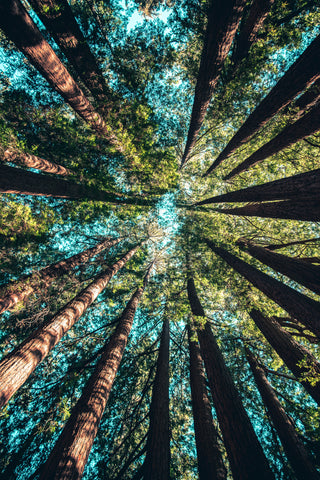Top 5 Spots to Camp this Winter
Jan 25, 2022
By Joe Coleman, Contributing Blogger
Just because the warmer weather has passed doesn’t mean you have to stay inside until spring! If you’re someone who wants to be outside in all four seasons, there are lots of parks and forests throughout the US you can visit. As a bonus, you won’t have to compete with the crowds you’d find in the peak months of the summer.
Why dispersed camping?
People enjoy dispersed camping because you can enjoy the best of nature for free (or very cheap). Oftentimes, you may have it all to yourself. You can disperse camp in any US National Forest or Grassland as long as you follow protocols and leave no trace. Many dispersed campers will also stay on Bureau of Land Management (BLM) land.
If you choose to disperse camp, you want to make sure you have all the necessary gear beforehand as you’ll be relying on yourself. Though it isn’t required, a high clearance vehicle with a four-wheel-drive system is often beneficial, especially if you want to go further off road.
Where to Go
1. Coronado National Forest
Low Temperatures: 48-51 degrees
High Temperatures: 66-72 degrees
Located near Tucson, Arizona, Coronado National Forest embodies the best of Southern Arizona. Just north of the border, this is a unique and less-visited stop. The main draw to this forest is the variety of trails. The desert lowlands area is popular during the winter. If you’re willing to brave colder weather, you can head to the higher elevations and pine forests.
If you want an established spot in the forest itself, try the Ash Canyon Road Dispersed Campground. If you’re okay with a bit of a drive, you can stay in the Las Cienegas National Conservation Area.

2. Sam Houston National Forest
Low Temperatures: 40-50 degrees
High Temperatures: 57-70 degrees
It’s safe to say that summer weather in the Houston area is unpleasant at best. Wintertime, however, sings a much different tune. The stars at night are truly big and bright, as the song goes, and there’s no better place to see them than the Lone Star Hiking Trail. This 129-mile trail is arguably the most popular long trail in Texas and a delight for thru-hikers. Sam Houston has several lakes to relax by if you want something less strenuous. It’s also a popular spot for small off-road vehicles and bike trails.
If you’re looking for an established dispersed spot, the Lake Niederhoffer Campsite requires just a mile-long walk to camp lakeside. Note that you’re required to camp in a park-run campground during deer season (October to mid-January).

3. Death Valley National Park
Low Temperatures: 40-55 degrees
High Temperatures: 65-80 degrees
You don’t want to spend too much time here in the summer, but winter tends to be quite pleasant. At lower elevations, you can see winter wildflowers starting in mid-February. While wildflower season is always a prediction, you can get updated information here.
The only downside here is that winter is the peak season for Death Valley. If you’re interested in seeing the largest park in the Lower 48, though, winter is the only bearable time to do so. If you take the Badwater Basin Crossing hike, you’ll be able to visit the lowest point in North America! You can opt to reserve a campground in the park (it gets busy) or camp just outside of it.

4. Valley of Fire State Park
Low Temperatures: 30-42 degrees
High Temperatures: 59-74 degrees
Valley of Fire is a criminally underrated Nevada state park. It sees about 250,000 visitors a year. For reference, that’s roughly the number of people that visit Yosemite in April alone. Luckily, you can enjoy what so many miss out on.
Visiting Valley of Fire is like journeying to another planet. With desert colors and otherworldly rock formations, you may forget where you are. Elephant Rock and Balance Rock are some of the more popular formations, while the Fire Wave Trail is the big draw. The park has affordable camping options, but 63% of Nevada is BLM land, and camping is easy to find.

5. Gila National Forest
Low Temperatures: 24-31 degrees
High Temperatures: 56-66 degrees
Gila has easily the coldest lows on this list, though the daytime is pleasant. However, there’s one unique thing about Gila Nation Forest that makes it all worth it: Cosmic Campground. Recognized as the first International Dark Sky Sanctuary in North America, there is no better place to get a 360-degree view of the night sky. There are a few rules and tips to make the most of your stay, but the site is free and first-come, first served. During the daytime, Gila National Forest is great for day hikes, and the Gila River is the main attraction for most people.




